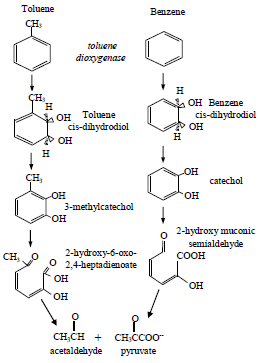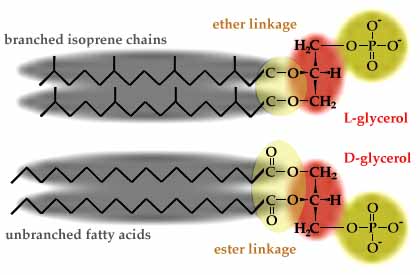 Microbiology Daily Newsletter
Microbiology Daily Newsletter
January 27, 2014 - Metabolism Basics
Daily Topic: Metabolism Basics
Metabolism is something all students should be familiar with by this point, especially the catabolic processes of gycolysis and citric acid cycles. Today, as a preparation for the work this week, we will do some reflection and clarification on catabolic metabolic processes.
1. What is the purpose of metabolism? If you say to gain energy, you are only half right. Catabolism is going to have two outcomes: energy harvesting and production of precursor metabolites.
The processes of glycolysis and citric acid cycle are going to release energy in the form of reducing potential, and many cells are built to harvest that reducing potential. But the chemical intermediates of the two processes are also critical for building biomolecules. We call these two processes "central metabolism" because we can build nearly every biomolecule from the
precursor metabolites produced.
Cells have to maintain a balance between energy and precursors. This is one reason why cells never reach the theoretical maximum yield of ATP production.
2. What is the energy we harvest from these processes? If your answer is ATP, then you need to reconsider. ATP does not equal energy to a cell. ATP is used to phosphorylate structures. The -2 charge of phosphate will change the electrochemistry of any molecule it attaches to, and in the case of proteins, will induce a change of shape (conformation). What then is the energy of cells?
Reducing Potential. Those electrons moved during redox reactions constitute the real energy harvested during glycolysis and citric acid cycle. It is the reducing potential we will use in electron transport chains to a proton motive force (an electrochemical gradient of hydrogen ions).
In the eukaryotic mitochondria, this proton motive force will be used to make ATP, but not so in bacteria. Bacterial proton motive force can be used for active transport and flagellar movement directly. ATP will still be made, as you need the ability to phosphorylate compounds and proteins, but bacteria will make less ATP than eukaryotic mitochondria.
3. Why does it take 10 steps to break glucose into pyruvate? During each step of glycolysis, you are inducing minor molecular changes that induce stress in the molecule. Through these molecular alterations, the cell carefully extracts energy. If there was a large change, you risk destabilizing the molecule and releasing energy as heat, which is dangerous to the cell. The cell needs a series of controlled reactions to capture the most energy.
Words of the Day:
There are four words that you need to know when dealing with metabolism. The terms deal with how energy and carbon are acquired by a cell.
Energy Acquisition: These terms deal with how the cell acquires reducing potential.
- Phototroph
- The cell uses photons to raise the energy state of electrons.
- The cell then transfers these electrons to electron carriers and carbon.
- In essence, they produce reduced compounds from photons.
- Chemotroph
- The cell uses reduced chemical compounds.
- The term can be divided into two subcategories:
- Chemolithotroph - use reduced inorganic compounds.
- Chemoorganotroph - use reduced organic compounds.
Carbon Acquisition: This is how the cell acquires carbon for the production of biomolecules.
- Autotrophic
- The cell has the ability to take Carbon Dioxide and reduce it to form glucose or another sugar.
- The process is known as carbon fixation.
- The cell provides the organic structures needed by the cell.
- Heterotrophic
- The cell uses organic structures (or reduced carbon) from external sources (e.g., glucose, amino acids, lipids).
- These organic structures are converted to other biomolecules as needed.
Each organism is given a name based upon it's principle means of carbon and energy acquisition. For example:
- Photoautotroph
- Photons used to raise energy states of carbon compounds.
- Cell can fix carbon
- Photoheterotroph
- Photons used to raise energy states of carbon compounds.
- Cells acquire organic structures from external sources.
- Chemolithoautotroph
- Reduced inorganic compounds primarily used for reducing potential.
- The cell can fix carbon.
- Chemoorganoheterotroph
- Reduced organic compounds primarily used for reducing potential.
- The cell acquires organic structures from external sources.
Daily Challenge: Reflection
What do you remember of metabolism? Describe what you remember. Does the information in this newsletter place metabolism into a new perspective for you? How? Do you remember the terms listed above? Describe what you remember. How do these terms help us to classify cells? Reflect on this statement: That the metabolic function of a cell is the most important aspect of a cell.
 Microbiology Daily Newsletter
Microbiology Daily Newsletter










